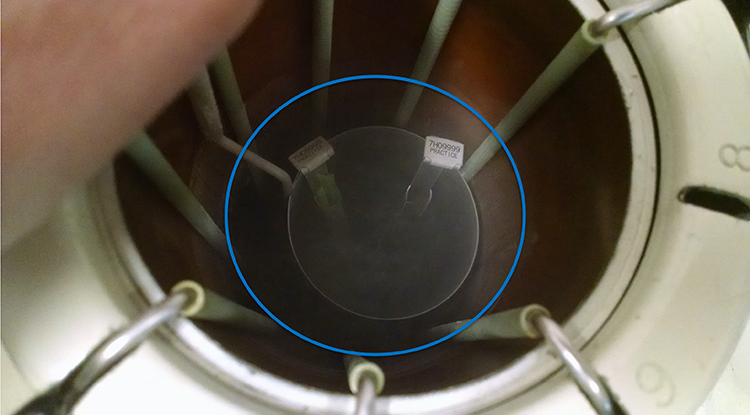
When it comes to handling dairy cattle semen in a liquid nitrogen storage tank, University of Idaho’s Joe Dalton offers this advice: “Always work below the frost line.”
During the December Hoard’s Dairyman webinar, the professor and extension dairy specialist encouraged listeners to check the liquid nitrogen level of their semen tanks every few days. This can be done with something as simple as a yard stick. Place the stick through the neck tube of the tank until it touches bottom of tank, then remove it and shake it in air. A frost line will form on the stick, revealing how much liquid nitrogen is present.
“We want to maintain a minimum level of about 10 inches,” Dalton said. He suggested working with an A.I. supplier who can help check and refill the tank on regular intervals.
When working in the tank to remove a straw of semen, Dalton highlighted the change in temperature that semen is exposed to when pulled out of the tank. At the bottom of the neck tube, the temperature is between -292°F and -213°F. At the top of the neck tube, which is just 6 inches higher, the temperature can be 36°F to 54°F, reflecting the influence of the outside environment.
Dalton said to always keep the canister and all the contents below the frost line highlighted in the photo, even the cane being worked with, to maintain the frozen sperm at an optimal temperature. “The importance of this is that sperm injury occurs at -110°F,” he stated.
The straw that is removed from the tank to be used is actually least affected by exposure to temperature, Dalton noted. “It’s the straws we don’t remove that get an additive effect each time we mishandle semen,” he explained. “Injury to sperm cannot be corrected by returning the semen to liquid nitrogen. The sperm do not have a mechanism to repair damage to membranes.”
Dalton also addressed the importance of human safety when working around liquid nitrogen, which can burn skin. He said that there are many ways to handle the product in a safe and efficient manner, including wearing gloves and using tweezers when working in the tank.
“We must understand that liquid nitrogen is dangerous if we don’t manage it appropriately,” he said. “The safety of everyone using liquid nitrogen is paramount.”
To hear more of Dalton’s advice, watch the December Hoard’s Dairyman webinar, “Back to the basics: Semen handling and tank management.” This webinar was sponsored by Select Sires.








